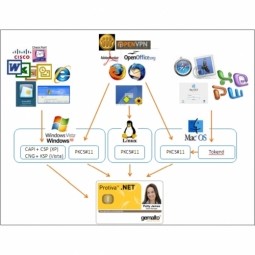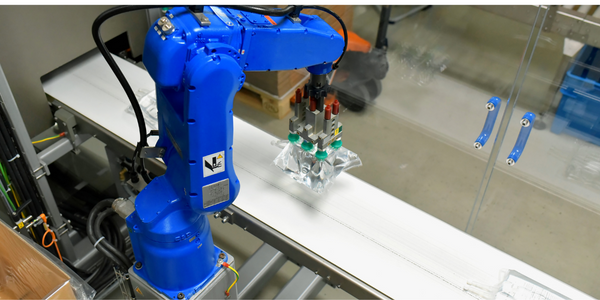Download PDF
Streamlining Digitisation Workflow: A Case Study of the State Library of New South Wales
Technology Category
- Application Infrastructure & Middleware - Middleware, SDKs & Libraries
- Infrastructure as a Service (IaaS) - Public Cloud
Applicable Industries
- Life Sciences
Applicable Functions
- Product Research & Development
Use Cases
- Inventory Management
Services
- Cloud Planning, Design & Implementation Services
- System Integration
The Challenge
The State Library of New South Wales, Australia's largest library, embarked on a long-term project to digitise its vast collection of over five million heritage items. The goal was to preserve these historic items while making them accessible to the public. However, the library faced a significant challenge in managing the digitisation process. Initially, they used a workflow solution called TeamTrack to log and track items through the process. However, this solution reached its end-of-life in 2017, necessitating a quick replacement. The library needed a comprehensive, location and device independent workflow platform that could integrate the entire digitisation process, meet the functional requirements of every team, align with the library's IT security policies, and include auditing and reporting capabilities.
About The Customer
The State Library of New South Wales, established in 1826, is the largest library in Australia. It houses a collection of more than five million heritage items, many of which are multi-page or consist of multiple parts. The library's primary goal is to preserve these historic items while making them accessible to the public. To this end, it initiated a long-term project about a decade ago to digitise its massive collection for online viewing. Despite significant progress, less than 5% of the library's original material collections have been digitised, indicating a substantial amount of work still to be done.
The Solution
The library collaborated with Nintex Partner Antares to design a comprehensive digitisation workflow system based on Nintex Workflow Cloud. This solution was chosen after evaluating and rating a range of options on criteria such as market share, ease of development and integration, and resource availability in Australia. The new system integrated the workflow stages, catalogue systems, and streamlined the digitisation process. It served as a one-stop-shop for all digitisation related information needs, fully aligning with the library's IT security policies and including auditing and reporting capabilities. The solution provided holistic workflow support, reducing operating costs and improving team productivity and employee efficiency.
Operational Impact
Quantitative Benefit
Related Case Studies.

Case Study
Corporate Identity Solution Adds Convenience to Beckman Coulter
Beckman Coulter wanted to implement a single factor solution for physical and remote logical access to corporate network. Bechman Coulter's users were carrying smart card badges for doors, but also needed a one-time password token to access to our corporate network when they were not in the office. They wanted to simplify the process.

Case Study
Embracing Business Success in Real Time
· Increase control over growing Big Data to improve business decisions · Manage data for 28,000 biotechnology stockkeeping units in the fields of microbiology, molecular biology, animal cell cultures, plant tissue cultures, and lab ware for laboratory chemicals · Accelerate report generation and analysis with real-time data

Case Study
Flow Robotics: Scaling Up Production and Accelerating Product Development with IoT
Flow Robotics, a Danish manufacturer, developed flowbot™ ONE pipetting robots to alleviate the strain on bioanalysts in life-science laboratories and hospitals across Europe. These robots were designed to automate part of the testing process, speeding up the time it takes to produce results and reducing pressure on staff. However, the company faced challenges in scaling up production and accelerating product development. High workloads and physically challenging conditions have long been an issue for laboratory professionals. Flow Robotics estimates that around half of medical lab technicians carry out the same arm movements for at least a quarter of their working day. The American Society for Clinical Pathology reported that 85% of laboratory professionals feel burnt out; 36% struggle with inadequate staffing; and 32% face a heavy workload and pressure to complete all testing on time.

Case Study
Revolutionizing Aerospace Industry with 3D Printing: A 63% Lighter Titanium Part
GE Aviation, a renowned name in the aerospace industry, recognized the potential of 3D printing technology in transforming the sector. The primary challenge was to reduce the weight of the aerospace parts, which would directly impact the fuel costs. A lighter airplane would mean lower fuel consumption, leading to cost savings and a smaller carbon footprint. However, achieving this weight reduction without compromising the strength and functionality of the parts was a significant challenge. Traditional manufacturing methods were not able to provide the desired weight reduction while maintaining the required stiffness and strength of the parts. The challenge was to find a solution that could create strong, light, and functional aerospace parts.
Case Study
Material Intelligence at Ethicon: Sustaining Medical Device Manufacturability and Improving Patient Care
Ethicon, a world-class medical devices company, faced several challenges in its operations. The rapid selection of manufacturing materials compliant in global markets was critical to assure patients, practitioners, and purchasing organizations of the biocompatibility of their medical devices. Ensuring supply chain continuity and minimizing risks of obsolescence for medical devices due to regulatory changes were also crucial in meeting Ethicon’s ongoing commitment to maintaining patient care. Furthermore, the engineers at Ethicon were developing the next generation of medical devices and needed to access historical material data to accelerate new product development. The process of centralizing and digitalizing its materials information was a significant challenge that Ethicon needed to overcome.
Case Study
IWT's Transformation: Customizing with Efficiency in IoT
IWT, a company specializing in the design, manufacture, and installation of washing systems for the life sciences and pharmaceutical industries, faced a significant challenge in managing its wide product portfolio. The company manufactures 45 different models, 60% of which are customized to some degree. This high level of customization, combined with limited production quantities, necessitated a controlled process for managing the release of engineering changes. The goal was to achieve efficiency, reduce process time, and better coordinate production throughout the organization. The need for strict compliance in heavily regulated industries further complicated the situation. IWT's existing PLM journey with Dassault Systèmes’ SOLIDWORKS for 3D CAD and Enovia for managing CAD data and Bills of Materials (BOMs) was proving inadequate. The system had limited part classification, no workflow, and no tool to ensure data consistency. The management of non-CAD documents was also a challenge, with information often difficult to find and access.





